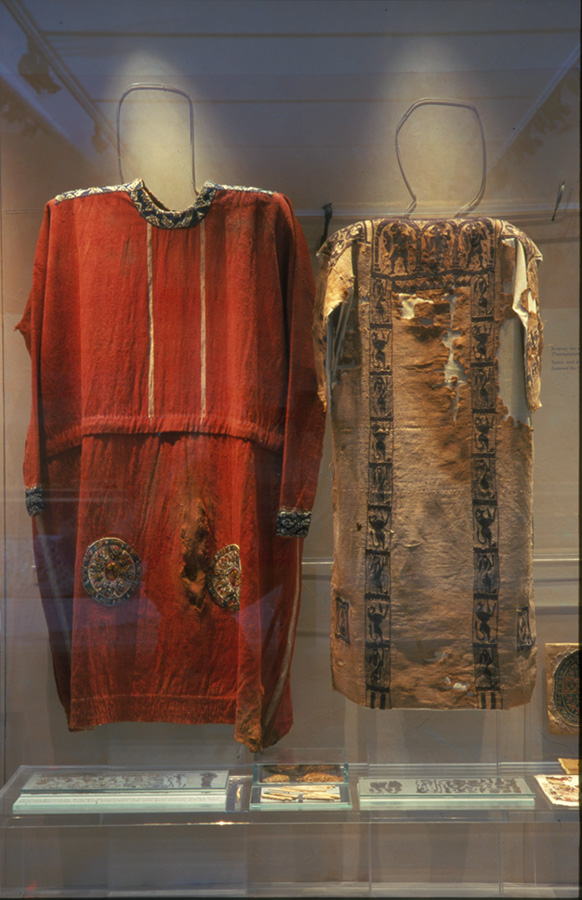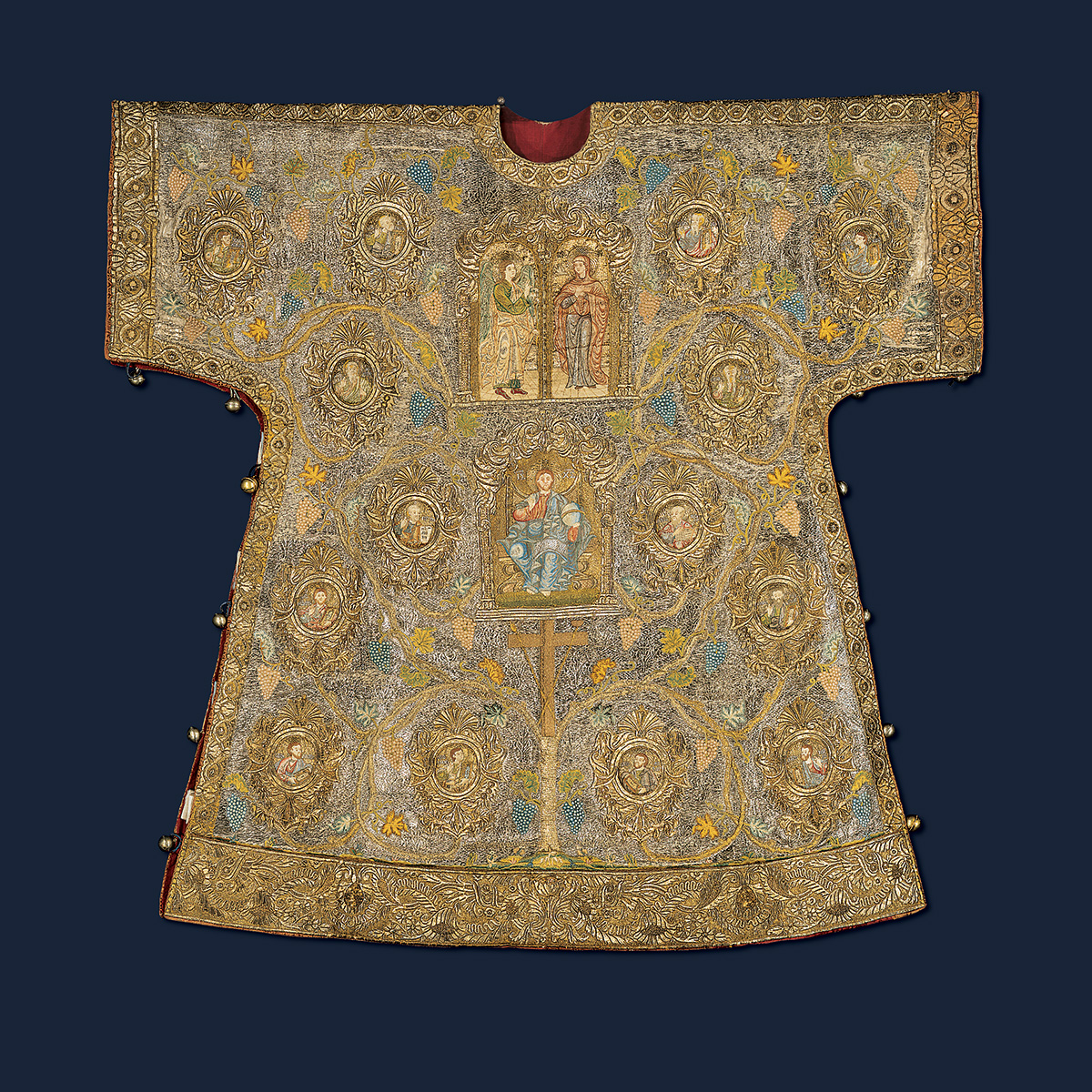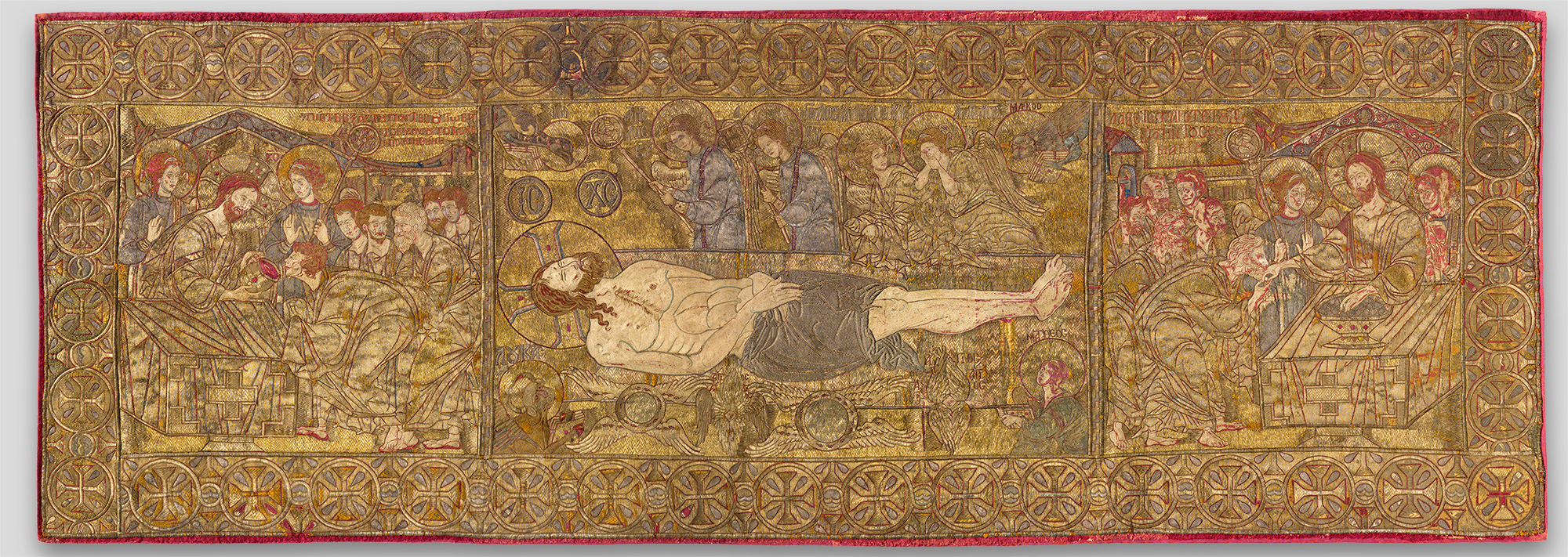This website uses cookies so that we can provide you with the best user experience possible. Cookie information is stored in your browser and performs functions such as recognising you when you return to our website and helping our team to understand which sections of the website you find most interesting and useful.

Chiton (tunic)
Woollen, dyed red, tunic with sleeves. It is decorated in the area around the neck and partially in the area of the shoulders. The decoration is composed of a band, in which white geometric shapes are shown against a black background, while on the cuffs of the sleeves a band has white lozenge motifs, which are also shown against a black background. The garment, at the height of the knees, is adorned with two patches in circle shape.
Tunics were the most popular garment in the area of the Eastern Mediterranean in late antiquity and were made of linen or wool. Garments until the Early Christian era had no sewing and were worn with the help of belts, buckles and pins. Cutting and sewing are practices which experienced wider spread in the Mediterranean area after the 7th century.
Code
ΣΔ 1/20
Type
Tunic
Chronology
5th-7th c.
Dimensions
Height 117 cm; width 100 cm
Material of Construction
Wool
Origin
Egypt (long term loan of the Benaki Museum)





